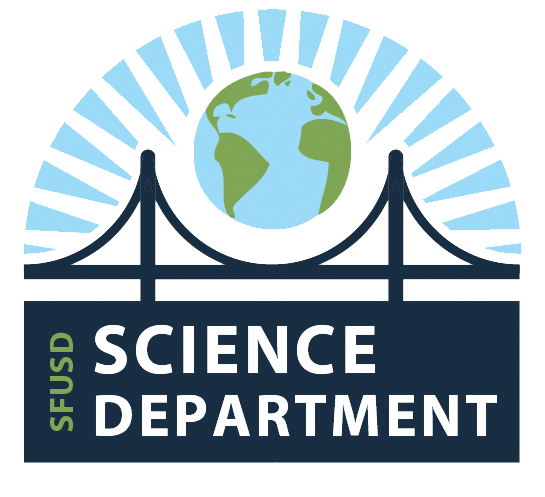
Overview
First-grade students in SFUSD do, talk, read, and write to figure out how the world works. They engage in 45 minutes of science instruction four times a week, starting with a five-lesson launch unit, then three 22-lesson content units. Alternate with history/social studies units throughout the year.
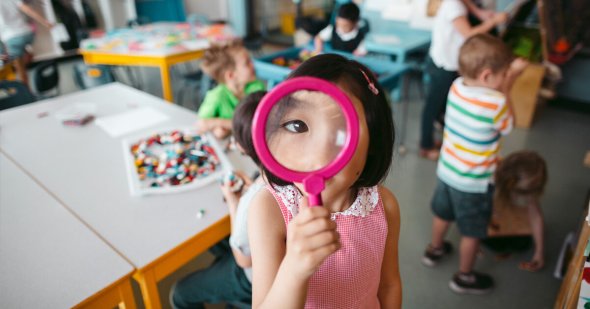
Students begin to develop their science identities and foundational skills in Launch Unit 0, and then build on them and their content knowledge in the life, physical, and earth and space science units that follow.
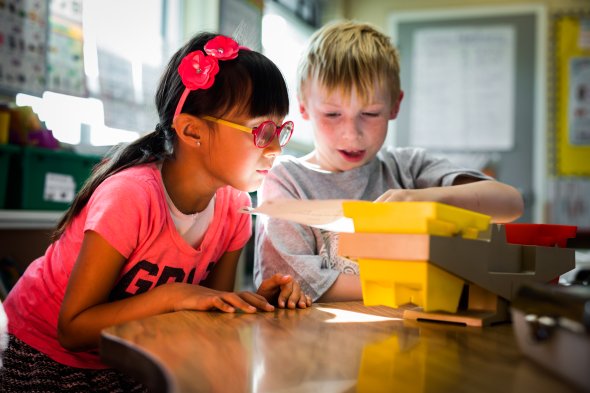
Prioritize using science to model a sense of awe and wonder about the natural and designed world, and guide students to ask questions, design simple investigations, and use their observations, data, and text to construct explanations and design solutions to problems.
Priority Standards Link to this section
What students will know, what students will do, and what thinking skills students will develop to apply and transfer scientific understandings that endure within the discipline, leverage deeper understandings, and/or support readiness for success at the next grade level. These are the standards that should anchor and drive instruction.
In first grade, focus on these critical areas:
Sciences & Engineering Practices
SEPs are behaviors scientists and engineers engage in to figure out and deepen their understanding of content. First-grade students predominantly practice:
- Asking questions based on observations about the natural or designed world(s)
- Developing and using models to make sense of science concepts
- Planning and carrying out investigations with guidance and peer collaboration
- Analyzing and interpreting data to describe patterns
- Designing solutions to solve specific engineering problems
Disciplinary Core Ideas
DCIs are the fundamental scientific ideas in the four domains: Life, Physical, Earth & Space Science, and Engineering.
(Continue to view the disciplinary core ideas students figure out through the four first-grade science units.)

I am a Scientist
Scientists observe, wonder, and record their thinking through drawing and writing in science notebooks.
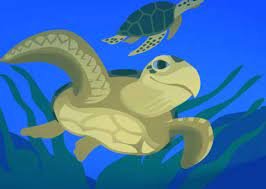
Animal and Plant Defenses
All living things must meet their basic survival needs: getting food, water, and oxygen, and avoiding being eaten. Animals and plants use their body parts in ways that enable them and their offspring to survive.
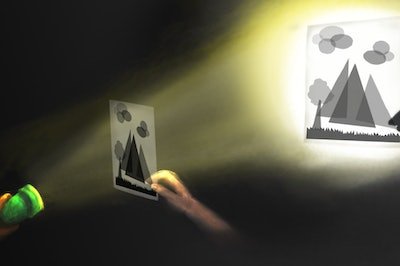
Light and Sound
Light and sound are all around us. Light allows us to see. It comes from a source and travels to a surface. Just like light, sound travels from a source. Vibrations cause sound and allow us to hear.
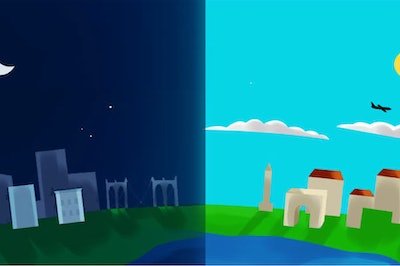
Spinning Earth
The sun makes a pattern in the sky which we experience as daytime and nighttime. As Earth spins, people in different regions experience all the times of day, but not all at the same time.
Crosscutting Concepts
CCCs are thinking tools that help students connect the ideas they are learning to ideas used across all domains of science. Questions that guide first graders to think across domains include:
- Structure and Function: What parts of a tortoise help it catch and eat food? (Animal and Plant Defenses)
- Cause and Effect: What makes shadows? (Light and Sound)
- Patterns: What do you always see in the daytime? (Spinning Earth)
Instruction: Signature Elements Link to this section
Below are signature elements of SFUSD Science instruction that students should experience regularly throughout first grade as they develop as scientists.
Arc of Learning in Every Amplify Unit
- Engage in a Real World Problem
- Collect Evidence from multiple sources (through doing, talking, reading, writing, and visualizing)
- Construct Increasingly Complex Explanations
- Apply Knowledge to Solve a Different Problem
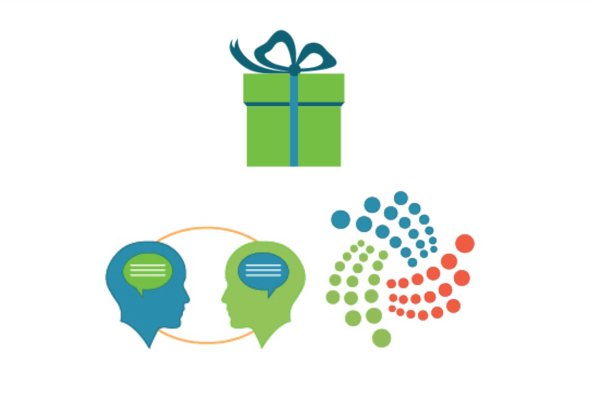
Science Norms
- Mistakes help us grow
- We talk to each other about science
- We can show science and engineering ideas in different ways
Science Notebooks
Science notebooks are a valuable thinking tool. They allow students to construct their understanding over time through drawing and writing, share their thinking with others, and develop language skills. They act as a storehouse for student observations, questions, and ideas throughout the year!
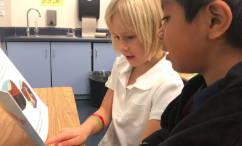
Collaboration
As scientists and engineers, first-grade students work with others while doing science. They carry out investigations, read and talk about science in pairs so that they can construct knowledge and develop language collaboratively.
Materials
The First-Grade Science Core Curriculum consists of 3 resources
Every kindergarten classroom has a set of 3 science kits that are SFUSD curricular materials to teach science. Each kit has:
|
|
||
|
|
|
|
|
|
||
Units
The opening science unit, Launch Unit 0, is five short lessons that support students to begin to build science identities and to use a science notebook. The three subsequent science units are intended to engage first graders in 45 minutes of science instruction four times a week. Each unit has 22 lessons. (Sometimes a lesson may take place over a few days.) Students build on their science identities and expand content knowledge in the life science, physical science, and earth & space science units. Click on the videos below for a six-minute unit overview for each unit, or access the unit resources and documents in the unit links column.
Additional science unit material and resources are available on the SFUSD Science Portal: http://bit.ly/SFUSDk5science
| Unit | Description | Video |
|---|---|---|
| The opening science unit, Launch Unit 0, is five short lessons that support students to begin to build science identities and a science community, and to use a science notebook. | ||
| Students advise an aquarium director by helping answer young visitors’ questions about Spruce the Sea Turtle, who will soon be released back into the ocean. As advisors, they develop understanding of how plants and animals use their external parts to help them survive, grow, and meet their needs as well as how behaviors of parents and offspring help the offspring survive. The understanding is developed that young plants and animals are like, but not exactly the same as, their parents. | ||
| A puppet theater company would like to use light and shadows to create scenery so they can easily transport their backgrounds to different performances. Students develop understanding of the relationship between sound and vibrating materials as well as between the availability of light and the ability to see objects. | ||
| Students help a young boy, who lives nearby, understand why the sky looks different to him than it does to his grandma when they talk on the phone. Students observe, describe, and predict some patterns of the movement of objects in the sky. |
Planning Guide
The Science Team suggests trying to stay as close to this schedule and teaching science 4 days a week for 45 minutes. Alternate every 5.5 to 6 weeks with social studies units for that 45-minute block. You’ll see that the schedule below allows a little room to adjust at the start of the school to classroom routines.
| 1st Trimester | 2nd Trimester | 3rd Trimester | |
|---|---|---|---|
|
We are All Scientists |
Life Science (LS): Animal and Plant Defenses |
Physical Science (PS): Light and Sound |
Earth Science (ES): Spinning Earth |
|
(4 lessons) |
(21 lessons) |
(20 lessons) |
(20 lessons) |
Reflection Questions Link to this section
- How are students' developmental needs, communities, and experiences being reflected and honored, or how could they be?
- What opportunities do you see for developing equitable access & demand, inquiry, collaboration, and assessment for learning?
- What are the implications for your own practice? What strengths can you build upon? What will you do first?
Want More?
Standards
More Resources
- Check out the many resources for each of the First-Grade Science Units on the SFUSD Science Portal
Contact the Science Team
- Anastasia Pickens - Elementary Science Content Specialist
- Claudia Scharff - Elementary Science Content Specialist
- Dr. Renée Marcy - Supervisor for Science; phone: (415) 298-8201
This page was last updated on May 17, 2023

